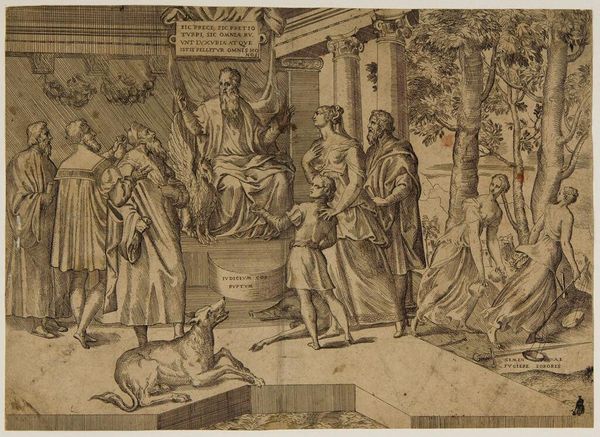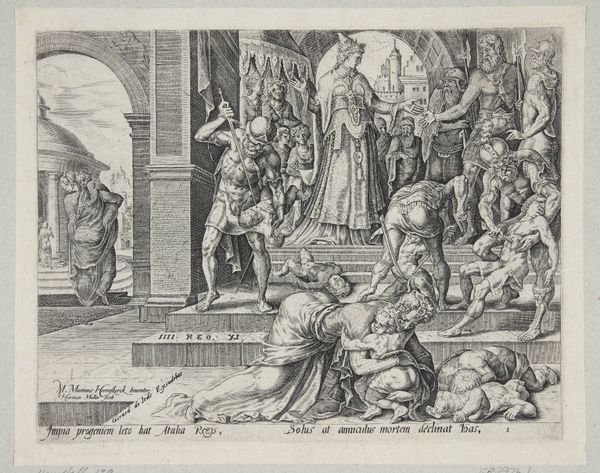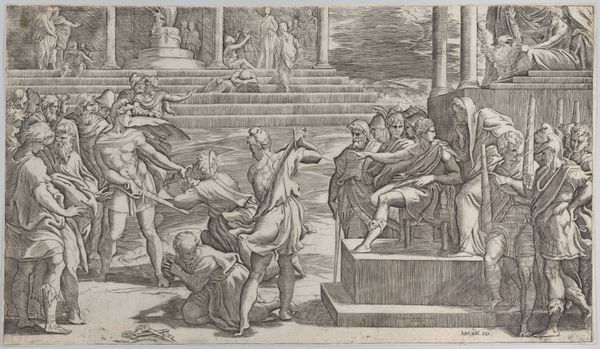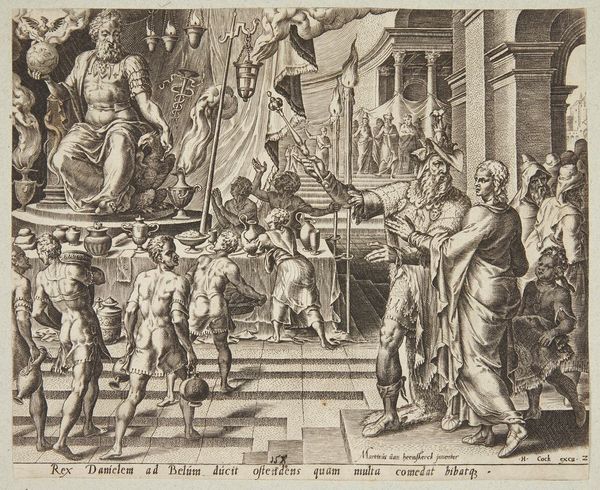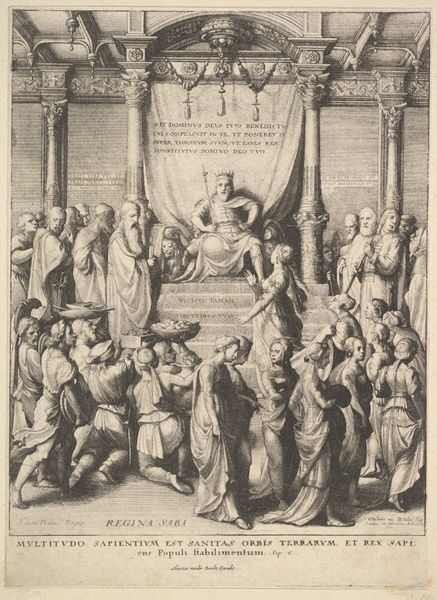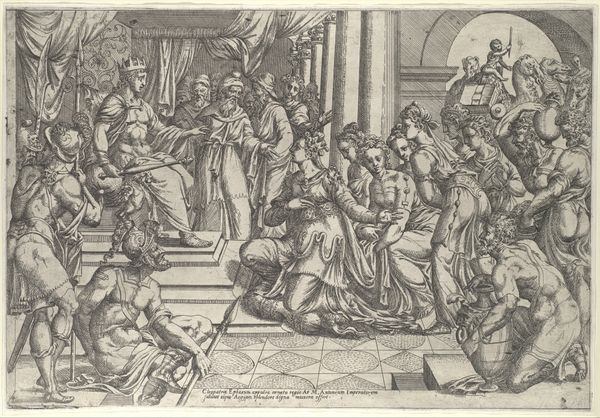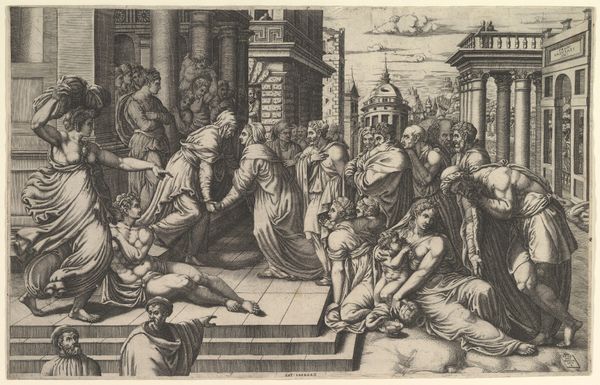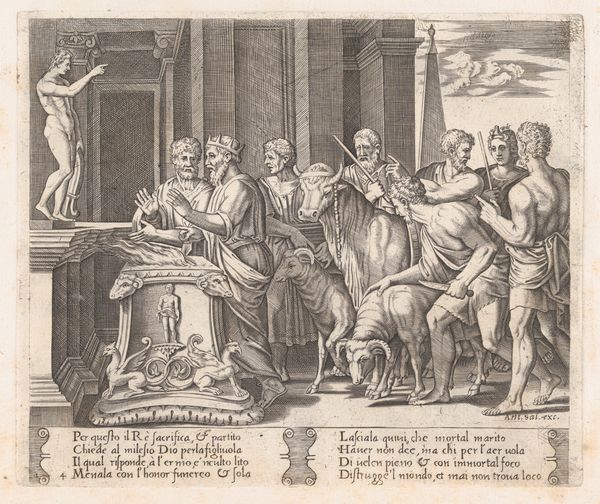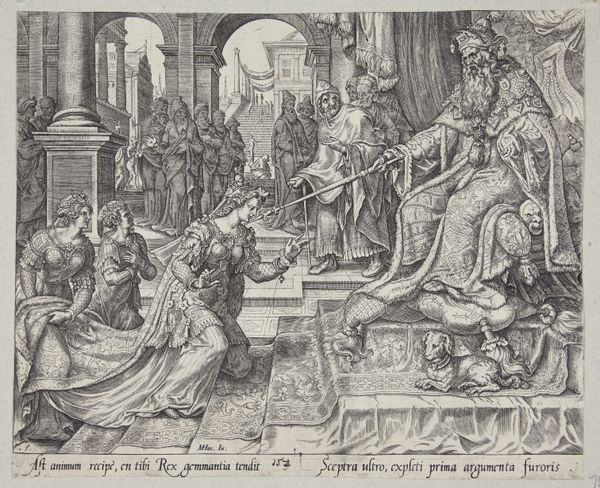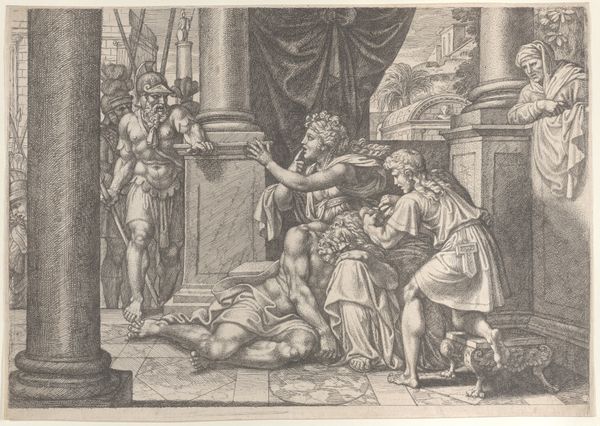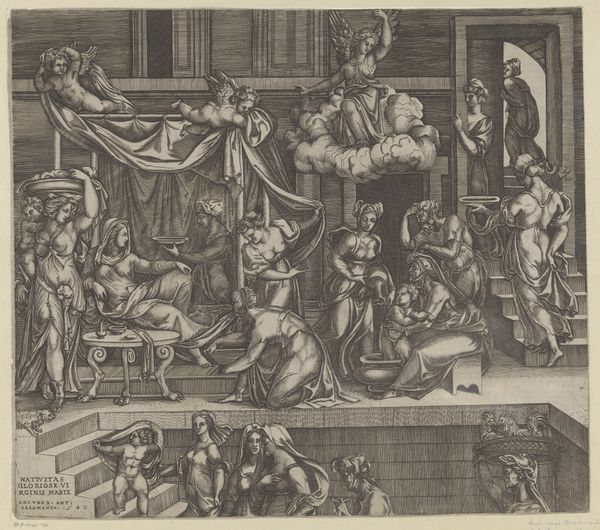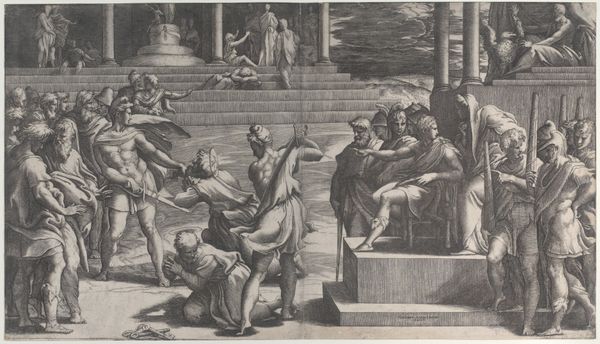
drawing, print, engraving
#
drawing
#
narrative-art
# print
#
figuration
#
history-painting
#
italian-renaissance
#
engraving
Dimensions: Sheet: 12 13/16 × 17 1/8 in. (32.5 × 43.5 cm)
Copyright: Public Domain
Curator: "The Corrupt Judge" by Battista Angolo del Moro, likely created between 1565 and 1573, is a truly striking engraving. You can currently find this work housed at the Metropolitan Museum of Art. Editor: It's interesting that such a potentially grand theme comes through to us in an engraving. The overall impression I'm getting is somewhat theatrical, even operatic! Look at the positioning of the figures! The scene feels like a morality play unfolding. There's this tension, this build up towards a grim pronouncement, isn't there? Curator: The composition is meticulously structured, directing our gaze to the enthroned figure. The lines of sight, the architectural framing—everything reinforces his position of power, which, the title suggests, is a false one. The textures rendered through engraving are incredible. Note how Moro distinguishes the weight of the fabrics. Editor: Absolutely! The texture! You almost want to reach out and feel the weight of those robes. But beyond the technicalities, which are amazing in their own right, that dog… I feel empathy with that lean, watchful dog in the lower corner. What's it thinking, eh? The symbolism is rich. Dogs being seen as symbols of loyalty and it looks rather concerned. It almost knows the judge is corrupt. Curator: Exactly. We can explore semiotics here and interpret each aspect that adds meaning to this portrayal. The imbalance of scales of justice on the right. The winged animal in place of where there would normally be displayed justice itself, now some monster. Editor: The judge, perched on his throne, is clearly more beast than man. Justice betrayed, that's the through line here. But, really, its ability to evoke such strong emotion is because it presents a vivid story through form. You understand just from a glance. No, wait, that pig at his feet! Surely not by chance that he added a pig to the composition. Curator: And there's the inscription in Latin above the Judge. Editor: Good catch, I did not see that. But I do not have a complete handle on Latin, so maybe that's best left alone to prevent butchering of its message. The narrative feels so potent because of all the contrasting elements we’ve observed together: light and dark, virtue and vice. Curator: I agree. It is quite thought-provoking. Battista Angolo del Moro captured a profound sense of moral decay here, still so resonant centuries later. Editor: It’s a testament to art's enduring power to make us ponder these things, don't you think? Even from just one brief glimpse.
Comments
No comments
Be the first to comment and join the conversation on the ultimate creative platform.
